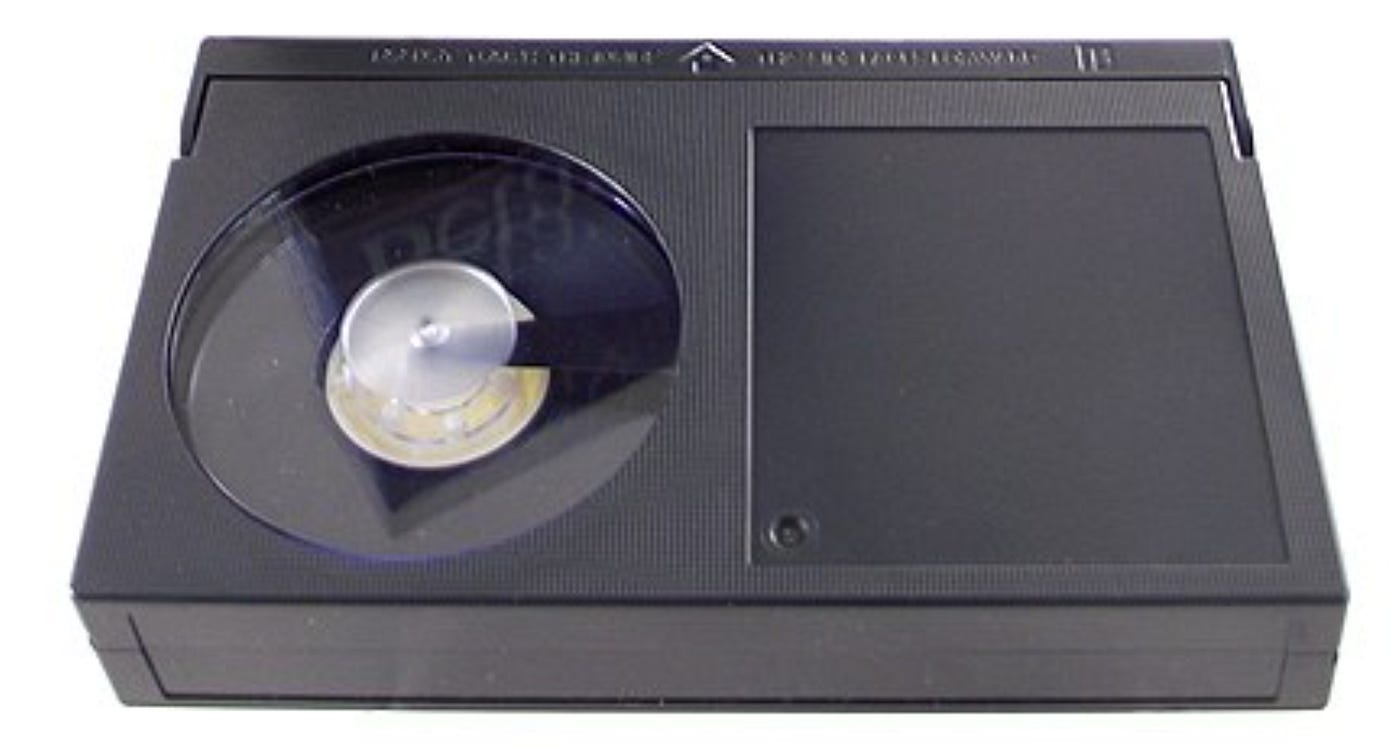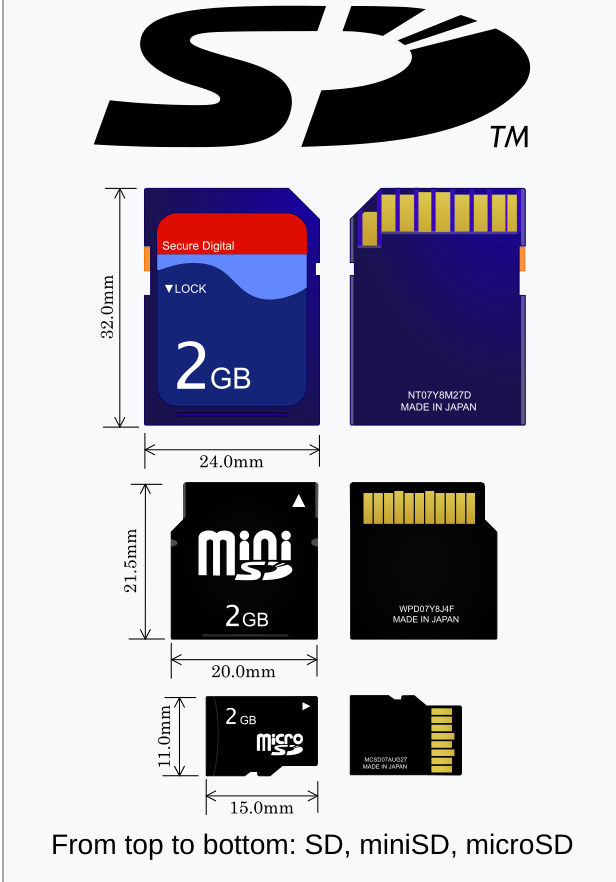What The Tech?! VHS & Video
In a digital world, it’s easy to forget how vital media storage once was
If you aren’t a medium member, you can read with no paywall via substack
As we’ve moved through our technical evolution, it's more than fair to say that we’ve seen substantial changes in how we make, consume and store media of all different types. In fact, the age of information came about because of our ability to be able to quickly store, categorize and deliver both media and scientific data.
In the early days, much of this responsibility was taken on by the printing press, with this technology providing much of the media that people would consume in the pre-digital world. With the birth of television though, eventually, digital media would move into the home with the evolution of analogue recording technology.
One of the most prolific mediums through this time was the VHS format. It’s responsible for helping bring the home cinema into the current concept, and in its miniaturized format (MiniDV) giving consumers the technology to record memories, television broadcasts and special events.
The Development Cycle
First invented in 1976, the VHS had a pretty late start to life all things considered. While magnetic tape of all styles did exist prior to the design of the VHS, most of these systems were commercial in nature and providing them with tape could be an expensive proposition. Despite this, the demand for consumer-grade equipment that was cheap (relatively speaking) and reliable was noted, and with that, the development of the VHS began.
It might surprise you to learn though that despite being the first to reach commercial success, the VHS was by no means the first tape-based system to be marketed. In fact, the first such system would be marketed over two decades earlier in the 1950s. But, one of the usual benchmarks for commercial success is affordability, and these were most certainly not affordable. So much so that the machine cost around $ 550,000 USD in today's money. But, a machine is only useful with a tape and one of those will set you back around $ 3,300 USD for a 90-minute version.
As you’d imagine, in 1950s America this was a considerable amount of money, putting it out of the reach of all but the most affluent of customers.
Collaboration between JVC & Sony in the early seventies would eventually lead to the development of the U-Matic, a precursor to what we’d recognise as the VHS system. These had many similarities with what would end up being VHS, including a twin-head machine, the ability to record and cross-format compatibility. This system would be the first to introduce the concept of a cassette, banishing the dated reel-to-reel system to the history books and bringing to life the first real consumer version of the technology.
Boom Years
While the U-Matic showed promise, engineers realised to achieve market success they’d need to successfully meet several key design features. These features were so important that they were eventually compiled into a checklist. This was known as the “VHS Development Matrix” which can be viewed in the image below.
As we can see, this proved to be a lofty set of goals using the technology of the time, with high margins set for serviceability, viewing quality and system longevity.
While these would lead to the boom years it’s important to remember the technology that was making its mark around this timeframe. While TV had been around for some time, Color TV was still relatively young, and engineers realised that any design would need to be able to operate in colour to achieve market success. Worse still, the entire electrical market was in turmoil during this period, with mergers, bankruptcies and a shift toward offshore manufacturing.
However, it wasn’t all bad news. The Apollo program saw new forms of technology in both broadcasting and storage formats and the evolution of the television promised a large market to the manufacturer that was able to successfully market a product first. The race was on.
Betamax was Sony’s contribution, but the market rejected its proprietary design for an open-source alternative. Source: Wikipedia
While competition is usually pretty healthy, in the media world what this usually means is standardising a format that the industry could use, and for JVC this was the VHS design. Sony though being, well, Sony, decided to push forward with their proprietary Betamax design. This would lead to the so-called “video format wars” in the late 70’s and early 80’s.
While Sony would eventually open source their design, it was too late, as industry collaboration had settled on using the open-source, VHS design. A net win for consumers the world over. Interestingly enough, we’d see a similar decision decades later when Sony pushed their own style of memory cards that were incompatible with flash SD systems, while later Apple also moved to a proprietary, closed ecosystem with its Macbook & iPhone designs.
Despite losing the war, the Betamax format was marketed by Sony for a considerable time! Machines would remain in low-level production until 2002, and Betamax tapes were still available new in 2016, nearly forty years after its initial design. An admirable effort for the so-called “loser” of the format wars.
The Beginning of The End
During the golden years, technology of all types went through rapid periods of evolution, often becoming obsolete as quickly as it became popular. We also saw systems become smaller and more complex, eventually moving away from through-hole designs to the mass-produced, surface-mount systems that are so commonly seen in today's world.
One of the biggest changes with home-based media though was the evolution of the new DVD and ongoing changes to the television format. While you’d think that this would be responsible for large, rapid changes, in fact, the opposite was true. The VHS would continue to be a mainstay of both the home and the school during this time. Its reliability, ease of use and ability to be cheaply repaired changed the way we saw media forever. VHS had a rugged, yet simple design. Source: Wikipedia.
VHS had a rugged, yet simple design. Source: Wikipedia.
Not only could the systems be used for free-to-air television, but new consumer video cameras could also use similar systems, leading to a near standardisation in format (albeit with geographical variations). This brought to life the concept of the “home video” which would become an iconic part of 80’s and 90’s life in many places the world over.
We’d also see the concept of the “video shop” continue for far longer than it should. Eventually making the transition to DVD, and finally becoming defunct with the evolution of streaming media, the video shop became a memorable part of youth for many people. That and the frustration of receiving a VHS that had not been rewound!
Not many things stand the test of time these days though, and despite commercial success eventually the evolution of new technology would lead to the VHS becoming a bit player in the media scene. Despite being found in aircraft, buses, railways, oil rigs and other commercial environments, it’s fair to say that high-speed internet was as responsible for killing VHS systems as the DVD was.
The blue and yellow ticket was a second home to many 80s and 90s youth.
Like many things though, some industries were very slow to change. In the legal industry, some sectors neatly skipped the DVD evolution entirely, moving from MiniDV formats straight to secure SD flash systems. This is because of the reliability of MiniDV as well as its ability to easily tell if it had been manipulated. It’s more than fair to say that this is a problem we’ll soon revisit, with the evolution of AI-powered media technology.
SD cards killed both DVD & VHS in one rapid blow. Source: Wikipedia.
Media, In Your Pocket, Forever.
It’s hard to describe how much change we went through in just a few decades, and while today, it’s pretty common to rent access to your media through places like Netflix, for a long time it was extremely common to own all of your own media. This meant that for many, libraries and archive systems would become critical and more importantly due to storage limitations of the medium, libraries would be massive in size.
Flash media however changed all this. While the earlier full-size SD cards were still pretty efficient, solid-state drives and eventually the new microSD format would make previous forms of media ridiculously inefficient.
In fact, with the right compression and correctly sized drives, you could effortlessly digitise the contents of an entire 90s video store onto modern solid-state drives.
This, paired with social media would eventually lead to our modern Age of Infomation. The ability to produce, archive and store massive amounts of data would help promote new forms of content delivery (like Instagram, Facebook or Medium) as well as new media types (Social Media in general).
Refinement of these systems would help put in place the foundations of our modern connected world. A world where we can watch a live stream of an incident happening in real-time across the globe. A world where email crosses both the sea and the wires (fibre optics) at the speed of light. And a world where we can literally archive our lives on websites of our choosing.
Technology can be more than a little bit impressive sometimes.
What The Tech is our recurring, twice-monthly piece that looks at the technology that was essential in shaping our modern world.
Medium has recently made some algorithm changes to improve the discoverability of articles like this one. These changes are designed to ensure that high-quality content reaches a wider audience, and your engagement plays a crucial role in making that happen.
If you found this article insightful, informative, or entertaining, we kindly encourage you to show your support. Clapping for this article not only lets the author know that their work is appreciated but also helps boost its visibility to others who might benefit from it.
🌟 Enjoyed this article? Support our work and join the community! 🌟
💙 Support me on Ko-fi: Investigator515
📢 Join our OSINT Telegram channel for exclusive updates or
📢 Follow our crypto Telegram for the latest giveaways
🐦 Follow us on Twitter and
🟦 We’re now on Bluesky!
🔗 Articles we think you’ll like:
- What The Tech?! Rocket Engines
- OSINT Investigators Guide to Self Care & Resilience
✉️ Want more content like this? Sign up for email updates






























